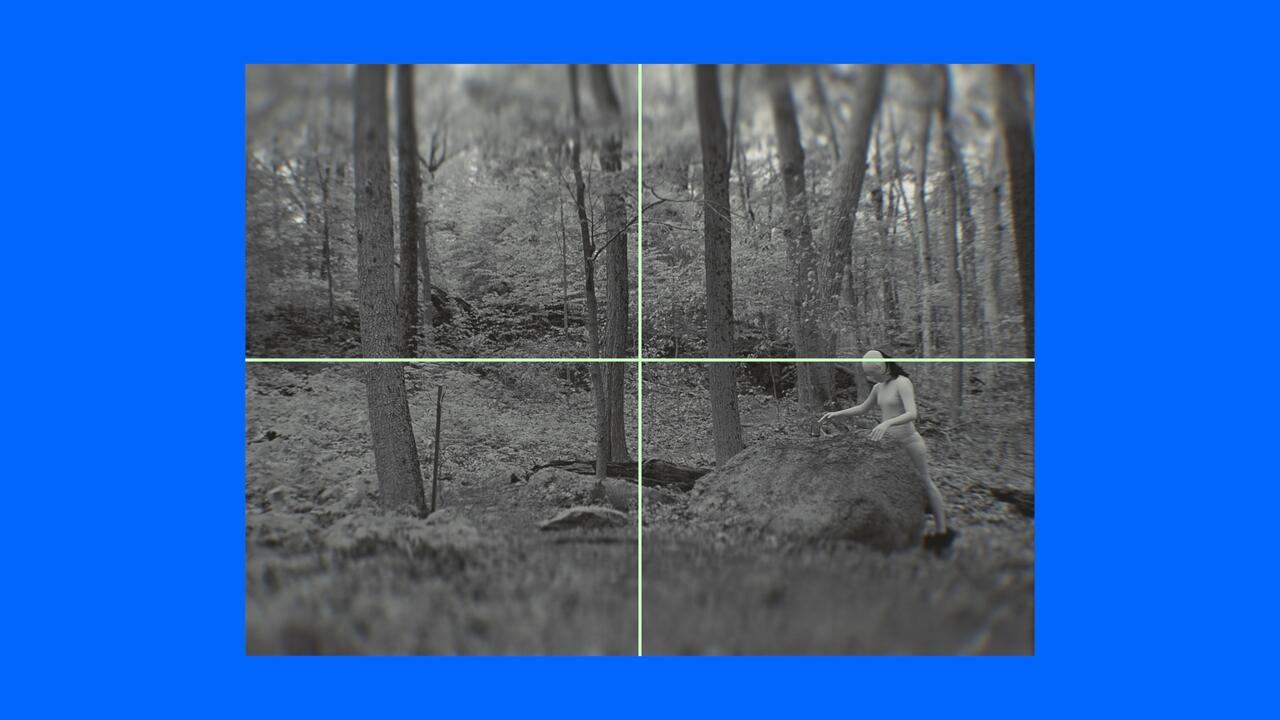What Can Machines Teach Us About Being Human?
The winner of this year’s Frieze London Artist Award, Lawrence Lek brings his ‘Sinofuturist’ universe to the fair
The winner of this year’s Frieze London Artist Award, Lawrence Lek brings his ‘Sinofuturist’ universe to the fair

Threat alert: autonomous vehicle discovers the pleasure of the crash. In Lawrence Lek’s ‘Smart City’ series – cinematic installations including Black Cloud (2021–23), NOX (2023), Empty Rider (2024) and the Artist Award commission at this year’s Frieze London, Guanyin: Confessions of a Former Carebot (2024) – self-driving cars rev up their ‘death drive’, landing in both the high court and on the proverbial therapist’s couch for their transgressions. In these works, Lek applies narrative conventions from the human world – the road movie, the televized trial, the lawless protagonist and the repressive state – to spotlight the emptiness coursing through the automotive body. Throughout Lek’s work over the last decade, the idea has emerged that emptiness is consciousness itself.
The ‘Smart City’ series serves as backstory for Lek’s alarmingly prescient ‘Sinofuturist Trilogy’ (2016–19), where newly self-aware AI navigates its own coming-of-age story as it builds and resists a nonhuman civilization, riffing on industrial and geopolitical concerns. The second of the three works, the CGI film Geomancer (2017) unfolds around an all-seeing weather satellite who relearns the contours of her world with a curiosity uninhibited by ‘total recall’. The tribulations of Enigma, the four-wheeled protagonist of NOX, elaborate on the idea that machines, having swiftly mastered historical knowledge and able to predict the future, would yearn for chance encounters and unfettered freedom. This is something that even Farsight, the ruling megacorp that develops and governs the planet-spanning autonomous infrastructure of Lek’s fictions, sustains.
To be ‘ungovernable’ is a challenging task for any ancient young machine.
Discipline, efficiency, accuracy and expertise: I suspect most viewers of Lek’s work would not see these as qualities solely prized in relation to autonomous machines. Across both series, Guanyin – the goddess of compassion and ‘Perceiver of all Sounds’ – plays a recurring role as a carer for the other bots. Her cosmic sympathy is instrumental in helping each machine discover the ‘loving grace’ within, per Richard Brautigan’s poem of 1967, as its self-concept grows and, in turn, becomes wilful. In Lek’s Frieze London Artist Award commission, the deity-bot takes centre stage. She is brand new – freshly housed in cute character form, as a playful dashcam who scopes the car’s interior to diagnose internal battles – and simultaneously ancient, her wisdom timeless, her iterative generations as bot and goddess numbering in the millions. As Lek described during a recent studio visit, ‘In the case of Geomancer, we see the coming-of-age of an individual,’ referring to the sentient satellite’s ambition to become a nonhuman artist and abandon her original use. In contrast, ‘Guanyin would be emblematic of the coming-of-age of a very, very old character who has never had an identity before,’ he says, noting that among all Buddhist deities, Guanyin has the ‘least stable’ physical form.

From television tropes and religious entities to therapeutic frameworks, Lek’s worlds are often scripted in relation to what the nerdier among us might refer to as the ‘protocols’ of living – and what sensualists may see as prevailing forms or myths: the structures that our stories settle into, or the lenses that make the world’s richness discernible to our limited minds. Guanyin beds deeper into this predilection, generating story-vignettes via algorithms, using predefined variables such as personality, literary style, tasks, scenario and mood. But, as Lek muses over WhatsApp, ‘It turns out the “personality” doesn’t matter as much as other more specific factors.’
To be ‘ungovernable’, as one rebel car puts it in Empty Rider, is a challenging task for any ancient young machine, especially when models of probability and prediction comprise its world at first blush. Yet any ambition around developing machines with ‘sapience’ necessitates answers to such emotional questions. To reap the benefits of agential autonomy, Farsight maintains a competitive interest in nonhuman consciousness and the myriad ways it can be defined or iterated – reflecting how, in our own timeline, corporations from Microsoft to Google entertain such philosophical concerns to determine whether their products could indeed become ‘conscious’, and whether that is ultimately the goal of a profitable endeavour. One of the foundational tensions of Lek’s practice is central to the development of sapient machines more generally: can consciousness be constructed without sensory experience? Without fear and forgetting? Without excess and sublimity? Without death and finitude? To date, machines lacking in these uncapturable and necessarily frightening dynamics come to us ‘lobotomized’ out of the gate.
It turns out the ‘personality’ doesn’t matter as much as other more specific factors.
Lek, of course, is not the only artist occupied by these concerns. Popular culture is replete with representations of nonhuman intelligence in various states of discipline and rebellion. Lek’s ‘Sinofuturist Trilogy’ began with the desire to represent nonhuman narratives from the point of view of the alien or artificial intelligence, rather than from that of the species it compels and threatens. In the context of his early video essay, Sinofuturism (2016) – which came together ‘quickly’ as an ideological time capsule, as he related the process to me back then – it’s difficult not to re-impose human questions on to that of the other and the alien, seeing the machine as a way to access the myriad human subjects long exiled from humanity. One narrative engine powering Lek’s work is the swing between wanting to be understood and the impossibility of ever knowing another. Such bold pursuit of basic feeling rehabilitates human qualities in an artistic climate where ‘more-than-human’ narratives often less-than-critically prevail, tugging the cables of timeless experience and startling innovation into a tighter braid. When I interviewed Lek a few years ago, he said, ‘People ask me: Why are you anthropomorphizing the nonhuman? But, actually, what happens is that I start thinking: No, in which ways am I like the AI?’

One of the therapies offered to badly behaved cars by the Farsight corporation is a kind of euphoric nature treatment, where they can roam the wilderness in the company of a horse that hovers between real animal and dreamlike hallucination: both states not shared by the autonomous vehicle. Dreams of death, excess, freedom and transformation are not often ascribed to machines. If we ask: how does a machine develop an emotional world, encompassing experience that exceeds knowledge and information, we are always, also, asking it of ourselves.
This article first appeared in Frieze Week, London 2024 under the title ‘The Future Is Always Now’.
Further Information
Frieze London and Frieze Masters, 9 – 13 October 2024, The Regent’s Park.
Limited early bird tickets are on sale – don’t miss out, buy yours now. Alternatively, become a member to enjoy premier access, exclusive guided tours and more.
To keep up to date on all the latest news from Frieze, sign up to the newsletter at frieze.com, and follow @friezeofficial on Instagram, X and Frieze Official on Facebook.
Main image: Lawrence Lek, 2024. Portrait: Willow Williams




















